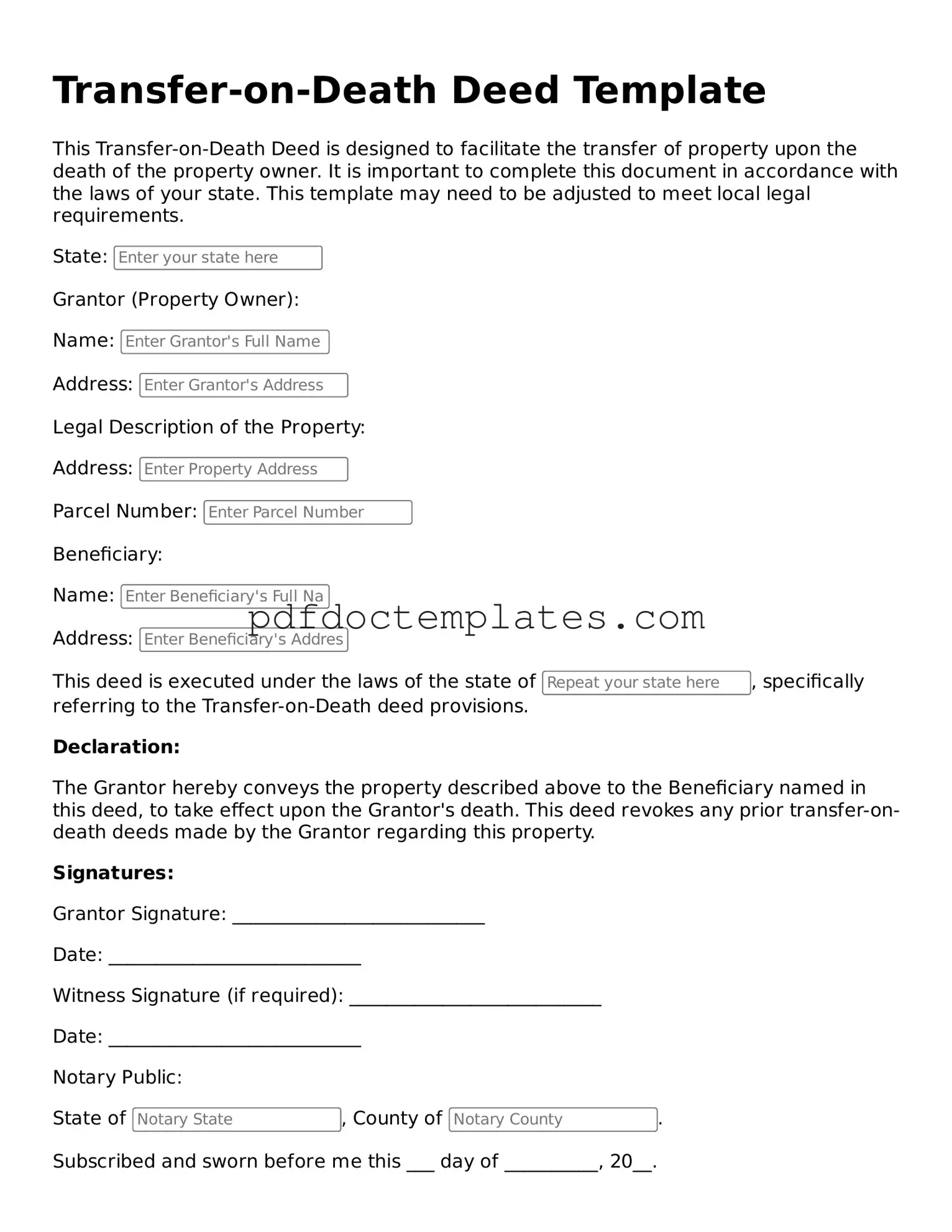Printable Transfer-on-Death Deed Template
A Transfer-on-Death Deed is a legal document that allows property owners to transfer their real estate to designated beneficiaries upon their death, without going through probate. This simple yet effective tool can provide peace of mind and streamline the process of passing on property. Ready to secure your property for your loved ones? Fill out the form by clicking the button below.
Access Your Document
